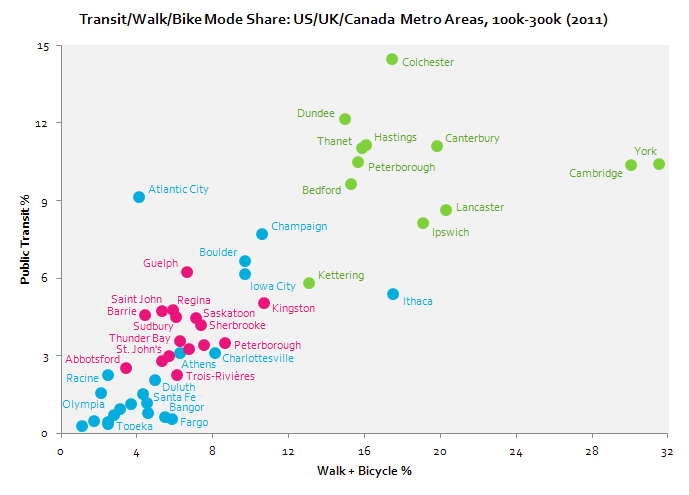Post-war subdivisions in Canada often incorporate TOD measures to reduce walking distances. Not just increased densities near arterials, but pedestrian walkways to the arterials to allow people to walk in a straight line to the nearest bus stop. As a result, even 90% post-war/suburban cities like Calgary (population 129,000 in 1951) have ridership competitive with US central cities and mid-sized European urban areas. Toronto is mostly suburban but TTC ridership is comparable to MTA in NYC. Pure suburban systems like Brampton Transit have 10 times higher ridership than suburban US systems like Pace. It takes very little effort to reduce these barriers to non-car travel, but US suburbs don't even try. Is it complacency, or is it deliberate? That is the real question.
Look at a place like Brampton, on the surface there are little difference from a typical US suburb. Brampton is clearly suburban, it is still largely built for the car, and yet Brampton Transit, serving a population of 600,000, got 144,000 boardings per weekday in 2016, more than St. Louis, Austin, San Antonio, Milwaukee, etc. Building new subdivisions for the car doesn't mean sacrificing permeability. So don't think of this a city vs. suburb thing, or a North America vs. Rest of the World thing.
The problem is not just that built form affects transit, but lack of transit also affects built form. You want dense, vibrant downtown with lots of pedestrians and cyclists? You want to reduce travel distances? Then you need to get rid of the parking lots. And to get rid of the parking lots, to reduce demand for parking, you need more people using transit. So if suburbs go out of their way to put up barriers to transit users from the city, or to discourage their own residents from using transit, then that will hurt the central city as well. We cannot think about the problem in terms of central cities vs. suburbs but instead as one urban area. It is all connected, and that's what this is all about, connecting not just people together but also places together. Ultimately, it is about unity, and the root of the problem in the US is it is just a deeply divided country. The poor transit ridership in the US, even compared to Canada, is mostly just a reflection of those divisions.







